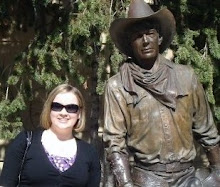(This is mainly an excerpt from my Senior Thesis on Audience Development, I figured why write it twice...)
Arts organizations need to function as any other marketing agency would; they cannot, because they are involved in the arts, think that they are free of the general rules of consumerism. Organizations need to practice the “Four Ps”of commercial market planning: Product, Price, Place, and Promotion. (Stephen Belth. “The Marketing Process.” Harmony: Forum of the Symphony Orchestra Institute 9 (October 1999): 75-76.) By following the basic rules of marketing along with special grassroots efforts, arts organizations can give themselves a chance at broadening their audience and building their community relationships. The main areas of marketing that organizations need to focus on are targeting, information gathering, programming, promotions, and advertising.
Targeting
The continual struggle of every arts organization is to identify, locate, and attract their target audience. Target audiences are demographics that include current arts patrons, those on the borderline, and people who do not attend arts events. How organizations cater to these groups is very important. When targeting specific groups, it's important to remember Price and Place. In the commercial world, price is determined by the basic rules of supply and demand. In selling a subscription series of tickets, supply and demand cannot easily be determined and followed. Subscription prices are often set before the season’s program is developed. Concerts that would sell out at higher prices are paired with concerts that will have empty seats. Some concerts in this case may be overpriced and some under-priced to create a balance. Organizations should attempt to focus more on audience response to prices then on their own budgets. If prices conform to consumer desires, then the more popular concerts will create higher box office returns and the less popular concerts will not be full of empty seats.
Age groups
When considering targeted groups and prices, organizations need to advertise the price in a way that is suited to the expectations of that particular class of patron. When considering a group of middle aged arts users with a sizable income who participate in a mid-level arts patronage, do not highlight the price of tickets for prestige, but also do not apologize for the price or offer discounts. When approaching younger audiences that include men and women in their late 20s or 30s that may be married and have children, the price should be described as a bargain for the kind of busy people that they are. Expand upon the intrinsic value of the experience that these men and women receive for their ticket price. When targeting younger students or groups, offer discounts. These are the people who will help fill the empty seats left after subscription orders have all been filled. Student rush tickets are an excellent way to encourage students to purchase tickets and maintain a full house. Students are guaranteed a seat, and even have a chance of ending up in the front row for only $10. Particularly for ensembles that perform in larger halls where some seats are less desirable because of obstructions of view, offering rates compatible to the student rush tickets for anyone who comes in the day of the concert and is willing to sit in these undesirable seats will help fill the house.
Location
A third, less frequently implemented demographic target is location. This falls under "Place". Music of the Baroque*, a sixty piece orchestra specializing in Baroque era music, has a grant from the Wallace Foundation to conduct research and analysis geared towards identifying potential audience members from high-density housing developments that are within walking distance of the Harris Theater, where Music of the Baroque performs. Music of the Baroque has identified 28 buildings in the downtown area and has specially targeted these buildings for receiving special materials and discounts in paper as well as online. Many of the residents in these buildings are empty nesters that can appreciate the concerts being in close proximity; thus this program will also draw new audiences to other events hosted by the Harris Theater, which is usually frequented by a younger crowd.
Music of the Baroque is not only making use of targeting methods in this instance, but is improving community relationships as well. They are focusing on building relationships with staff members in these buildings as well as residents. Targeting by location, while somewhat limiting diversity when similar people inhabit the same building, helps spread information about the arts out to people who might never have had the opportunity for that exposure. People who have no prior history with the arts but happen to live near the Harris Theater are given an opportunity to try something new and to share the information with others.
*(the info on MoB comes from an interview with Roslyn Modzelewski. Director of Marketing and Communications of Music of the Baroque February 27, 2008
Subscribe to:
Post Comments (Atom)

No comments:
Post a Comment